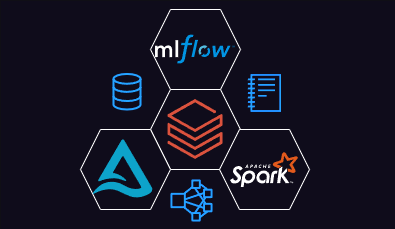Writing clean, maintainable code is an essential skill for any developer, whether you're working solo or as part of a larger team. Clean code not only improves readability but also enhances scalability, reduces bugs, and makes future maintenance a lot easier. In this article, we'll cover the key strategies that will help you write cleaner, more efficient code, no matter your level of experience.
What is Clean Code?
At its core, clean code is about making your code easy to understand and modify. It's structured in a way that other developers (or your future self) can pick up and grasp quickly, without needing to decipher obscure logic or tangled functions. Clean code is not just functional—it’s clear, concise, and purposeful.
Key Strategies for Writing Clean Code
1. Consistency is Key
Consistency is one of the most crucial aspects of clean code. Whether it's naming conventions, indentation, or file organization, consistency ensures that your code follows a predictable structure. This makes it easier for others (and you) to follow the logic, trace errors, and contribute efficiently.
How to Apply It:
- Use descriptive, meaningful names for variables, functions, and classes.
- Stick to standard naming conventions (e.g., camelCase for JavaScript, snake_case for Python).
- Maintain uniform indentation, preferably by adhering to your team's style guide or a widely accepted standard like Prettier for JavaScript or PEP 8 for Python
2. Write Small, Focused Functions
The principle of Single Responsibility states that each function should do one thing—and do it well. When functions are short and focused, they're easier to understand, test, and debug. If a function grows too large or takes on multiple responsibilities, it becomes harder to track down issues or make changes without breaking something else.
How to Apply It:
- Keep your functions between 5-15 lines of code, whenever possible.
- Break down complex tasks into smaller, reusable helper functions.
- Avoid side effects—functions should ideally only return a value without altering external states unless clearly defined.
3. Prioritize Readability Over Cleverness
It’s tempting to write complex, clever code that shows off your skills—but this often leads to cryptic, unreadable code. Clean code prioritizes readability and simplicity, even if that means using more lines of code to achieve the same result. Code is read more often than it's written, so clarity should always take precedence.
How to Apply It:
- Avoid overly complex or nested conditions—consider refactoring large conditional blocks into helper functions or using guard clauses.
- Use comments wisely: Rather than explaining what each line of code does, ensure the code itself is self-explanatory by using clear variable names and logical structures.
- Stick to the KISS principle (Keep It Simple, Stupid): Simpler is almost always better.
4. Refactor Early and Often
Refactoring is the process of restructuring existing code without changing its functionality. It’s a critical habit for maintaining clean code. Refactoring allows you to improve code readability, eliminate duplication, and make your codebase more modular and scalable.
How to Apply It:
- Don't wait for a big project to refactor—do it in small steps as you go.
- Continuously improve variable names, break down large functions, and simplify logic wherever possible.
- Use automated tools like linters and formatters to help identify areas for improvement.
5. Use Meaningful Comments
While clean code should largely speak for itself, there are situations where comments are helpful. Comments should provide context or explain why you did something unusual, rather than what the code is doing. Over-commenting can clutter the code, but well-placed, meaningful comments enhance understanding.
How to Apply It:
- Explain why a decision was made, especially for complex logic or algorithms.
- Avoid redundant comments that restate what the code already clearly expresses.
- Use comments sparingly, focusing on the bigger picture when necessary.
6. Test, Test, Test
Writing clean code also means writing code that can be easily tested. Automated testing is essential to ensuring your code is functional and bug-free. Clean code is structured in a way that makes testing each function or module straightforward.
How to Apply It:
- Write unit tests for all critical functions.
- Practice Test-Driven Development (TDD) by writing tests before you write the actual code.
- Break dependencies in your code to make individual components easier to test.
Why Clean Code Matters
Writing clean code might seem like extra effort at first, but it saves a huge amount of time and frustration in the long run. Whether you're working with a team or developing a solo project, clean code is:
- Easier to Read: Makes onboarding new developers or collaborating with others smoother.
- Faster to Debug: Helps you identify and fix bugs quicker, reducing the risk of introducing new problems.
- More Scalable: Clean code can grow with your project, allowing you to add new features without breaking the old ones.
- Less Prone to Errors: Cleaner code means fewer places for bugs to hide, making it easier to maintain quality over time.
Conclusion
Writing clean code is more than a practice—it's a mindset. By focusing on consistency, simplicity, and regular refactoring, you'll build code that’s reliable, scalable, and easy to maintain. Whether you're new to coding or have years of experience, these strategies will help you take your code quality to the next level. Clean code benefits everyone who touches the codebase, ensuring that your work remains valuable and accessible for years to come.




